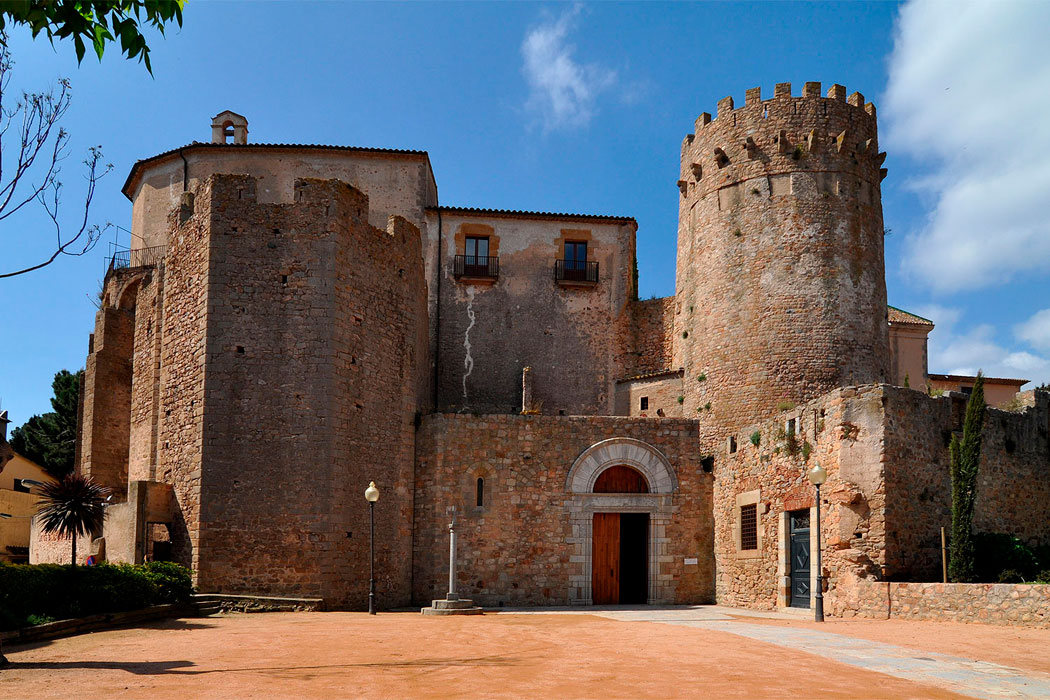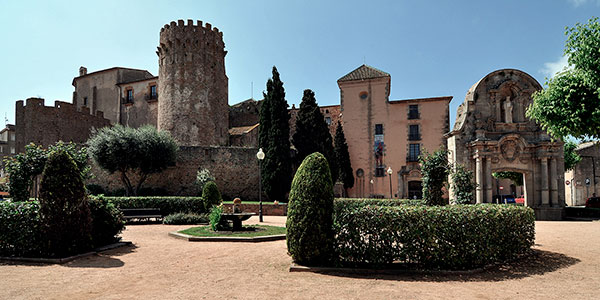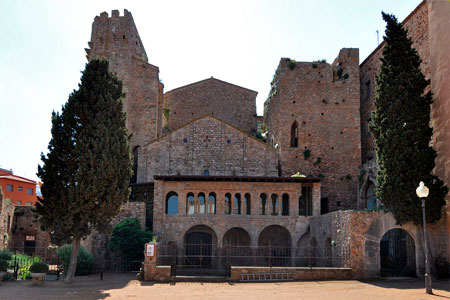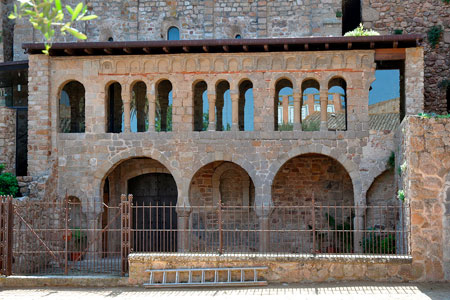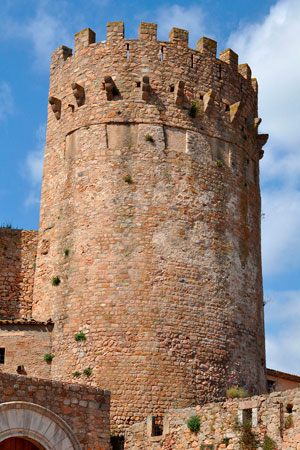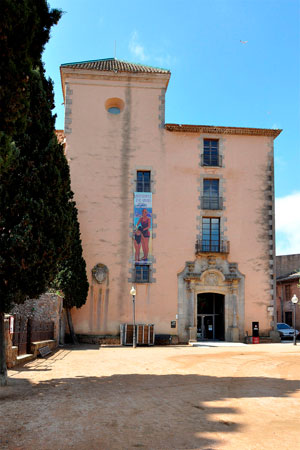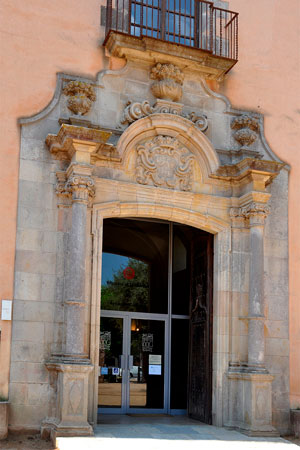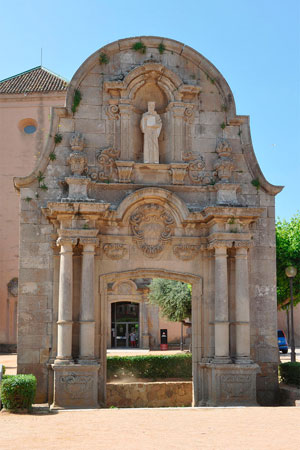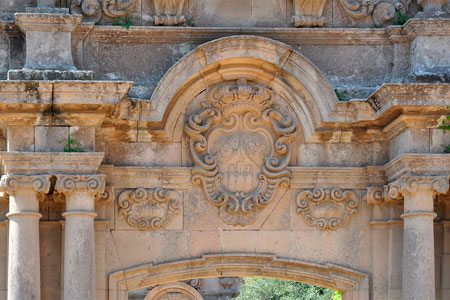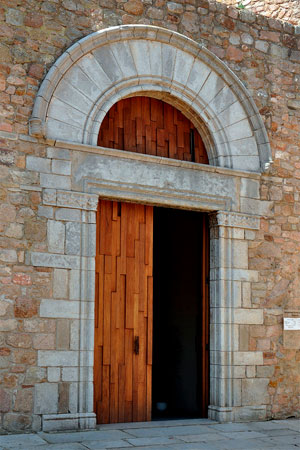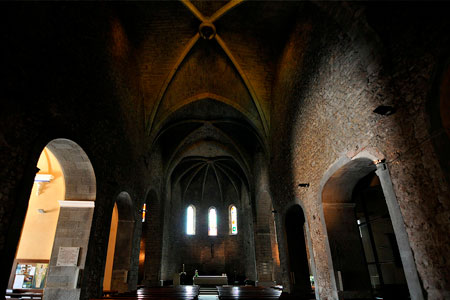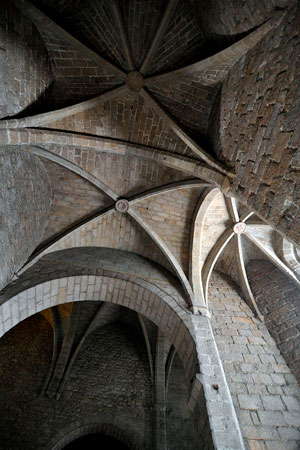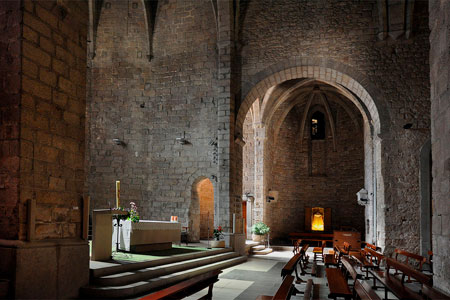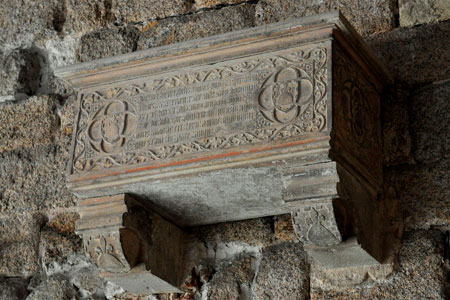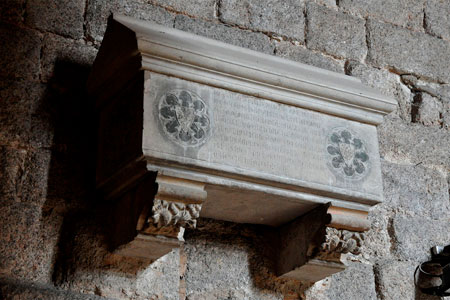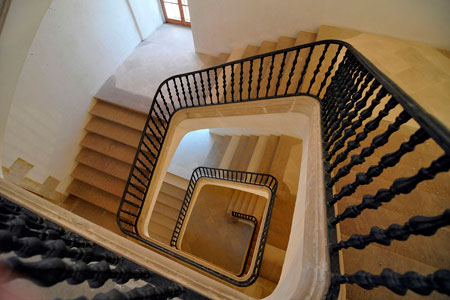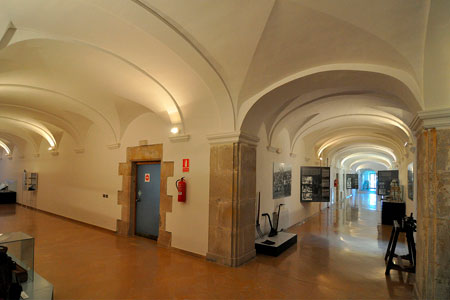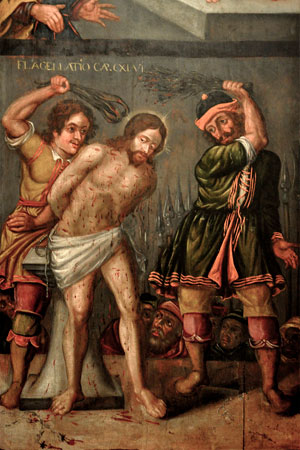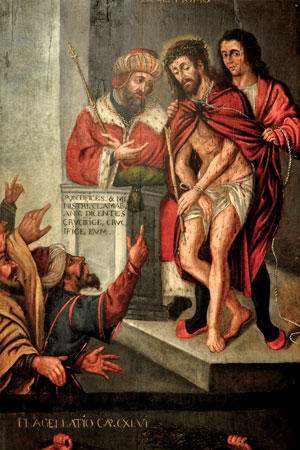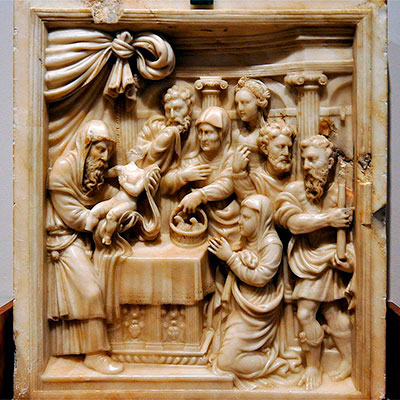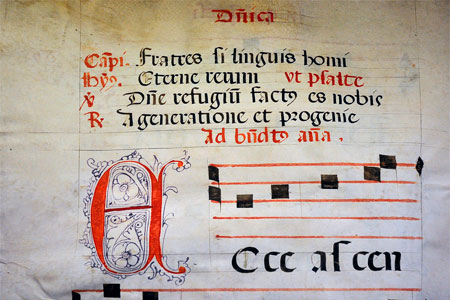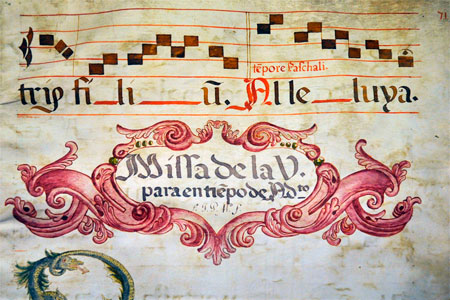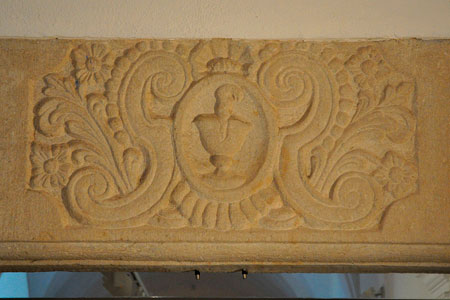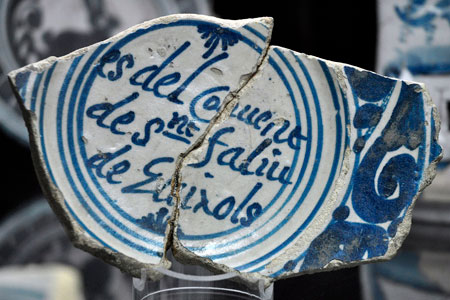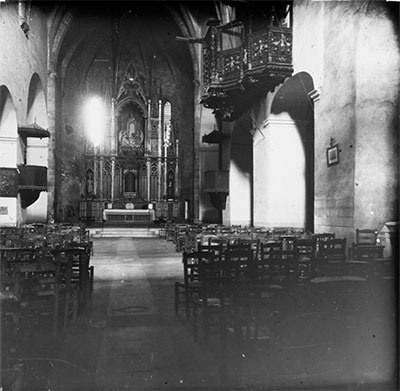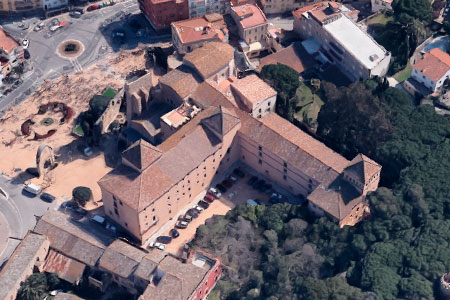The monastery of Sant Feliu is dedicated to the martyr of African origin (Felix, or Feliu the African, or Feliu de Girona) who preached in these lands and died because of Diocletian's persecutions at the beginning of the 4th century. His martyrdom is usually placed in Girona, but it is also thought that this episode took place in the town of Sant Feliu de Guíxols itself.
The specific date of the foundation of the monastery is unknown; it has been said that it could have been an initiative of Charlemagne at the end of the 8th century, but it is more likely to have taken place at the beginning of the 10th century, when the territory was being repopulated. The first document that directly mentions this establishment is a donation in its favour granted by the Counts Sunyer and Riquilda of Barcelona. It has not been preserved, we only have evidence of its existence, but it helps to situate the foundation before 947, the date on which Miró succeeded his father, Sunyer. In 968, a diploma from the Carolingian king Lothair authorized Abbot Sunyer to simultaneously direct the monasteries of Sant Feliu and Sant Pol del Maresme, the first full confirmation of their existence.
The first monastic church, which may have been built on the site of an earlier building, was destroyed by a Saracen invasion in 965. Abbot Sunyer, the first known abbot, oversaw rebuilding the monastery, a Romanesque building between defence towers, which may have existed before. Important figures of the time, such as Abbot Oliba and Ermesinde of Carcassonne, Countess of Barcelona, took part in the construction. In 1117 there was an attempt, even by force, to join it to the Languedoc monastery of Lagrasse, which was unsuccessful. As a result of the monastery's involvement in the conquest of Mallorca, it received some possessions on the island. In 1285, the monastery was again damaged by the French army and had to be restored.
Shortly afterwards, and because of the town's great development, the monastery undertook the task of renovating and enlarging the church. Work began in 1317 and by the middle of the same century the old Romanesque chevet had been replaced by the new Gothic apses. At the end of the century, the nave was also modified, and part of it was rebuilt with a Gothic construction, while part of the old nave, which was lower and occupied by the monastic choir, remained. A bull by Pope Adrian VI united this monastery to the Congregation of Saint Benedict of Valladolid (1515).
In the 18th century, major works were carried out on the monastic complex, which completely renovated its auxiliary buildings. There was also a project to rebuild the church, but it was not carried out and only minor alterations were made that did not affect it profoundly. In the 19th century, there was a temporary exclaustration of the community (1820-1823) and the definitive one in 1835. The church continued with its parish functions, but suffered destruction on several occasions, especially to its furnishings. In 1931, restoration and consolidation work were carried out on the church, particularly the Porta Ferrada. In 1936 it was a new episode of loss of movable heritage and after the Civil War the building was restored again.
The oldest visible part of the monastery of Sant Feliu de Guíxols is the western part of the church where the Porta Ferrada and the defense towers (the Corn tower, with a Roman base, and the Fum tower) are located. The chevet, to the east, is Gothic from the 14th century.
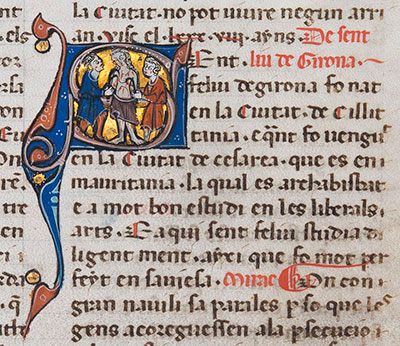
The martyrdom of the saint, illustration of Golden Legend
Bibliothèque nationale de France
Felix, Feliu de Girona, or Feliu the African
Saint Felix is a Girona martyr of North African origin who died, most likely in the current Mercadal neighbourhood of Girona, during the Diocletianic Persecution, at the beginning of the 4th century. It is also believed that he was martyred in Sant Feliu de Guíxols. He was buried outside the walls of Girona, where a primitive construction, or martyrium, was erected in his memory. That funerary temple would be expanded over time to the current basilica of Sant Feliu, near the Sobreportes portal.
- ALENY, Joseph de (1680). Antiguedad ilustrada, y verdad manifestada; a cerca la pretensión, si el convento de San Felix de Guixols... Barcelona: Andreu
- BADIA I HOMS, Joan (1977). L’arquitectura medieval de l’Empordà. Vol. I. Girona: Diputació de Girona
- BADIA I HOMS, Joan; CASES I LOSCOS, M Luïsa (1989). Sant Feliu de Guíxols. Catalunya romànica. Vol. VIII. L’Empordà I. Barcelona. Enciclopèdia Catalana
- BATLLE Y PRATS, Luis (1971). La biblioteca del monasterio de San Feliu de Guíxols. A. del Instituto de Estudios Gerundenses
- BLANCO, Joan (1991). El monestir de Sant Feliu de Guíxols (segles X-XI). La formació del domini. Ajuntament de Sant Feliu de Guíxols
- CALZADA, Josep; ESTEVA, Lluís (1984). Sant Feliu l’Africà i Sant Feliu de Guixols. Estudis del Baix Empordà, núm. 3
- CANO, Alonso (1606). Discurso general de este antiquísimo Castillo y Monasterio de Sanct Feliu de Guíxols. Manuscrit. B. Nacional de España
- CERVERA, Josep Mª. (1984). Història del Monestir de Sant Feliu de Guíxols. Olot: Alzamora
- COSTA, Xavier (2019). Paisatges monàstics. El monacat alt-medieval als comtats catalans (segles IX-X). Tesi doctoral. Universitat de Barcelona
- ESTEVA, Lluís; PALLÍ; Lluís (1995). Els llocs de la Vall d’Aro, Gissalis i el monestir guixolenc (881-1199). Sant Feliu de Guíxols: Amics del Museu Municipal
- GAVÍN, Josep M. (1983). Inventari d'esglésies. Vol. 14. Baix Empordà. Barcelona: Arxiu Gavín
- GIMÉNEZ, Àngel (2014). Quatre moments de canvi en la història del monestir guixolenc. Revista del Baix Empordà. Núm. 47
- JIMÉNEZ, Àngel (2001). L'església parroquial del monestir de Sant Feliu de Guíxols. Sant Feliu de Guíxols: Parròquia de la Mare de Déu dels Àngels
- MARCÓ, Xavier (2011). La senyoria feudal en un vessant de les Gavarres. Els dominis territorials de la vall d'Aro al segle XV
- MARCÓ, Xavier (2009). El monestir de Sant Feliu de Guíxols. Els monestirs benedictins de l'antic comtat de Besalú. Besalú: Amics de Besalú i el seu Comtat
- PÉREZ PASTOR, Plàcid (2019). El servei armat de l'abat i convent de Sant Feliu de Guíxols a Mallorca: la cavalleria Na Burgueta (s. XIII-XIX). II Jornades d'Estudis Locals de Llubí
- VIVO, Jordi; i altres (2012). Del dominus a l’abat. La història de l’entorn del monestir de Sant Feliu de Guíxols. Ajuntament de Sant Feliu de Guíxols
- VIVO LLORCA, Jordi (2023). El monestir de Sant Feliu de Guíxols des de la perspectiva arqueològica. Els monestirs en època medieval i moderna. Novetats des de l’arqueologia. Universitat de Girona
- ZARAGOZA, Ernest (1998). Abaciologi del monestir de Sant Feliu de Guíxols (segles X-XIX). Barcelona: P. Abadia de Montserrat
